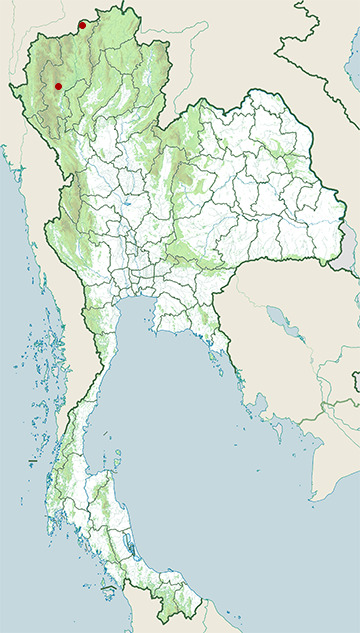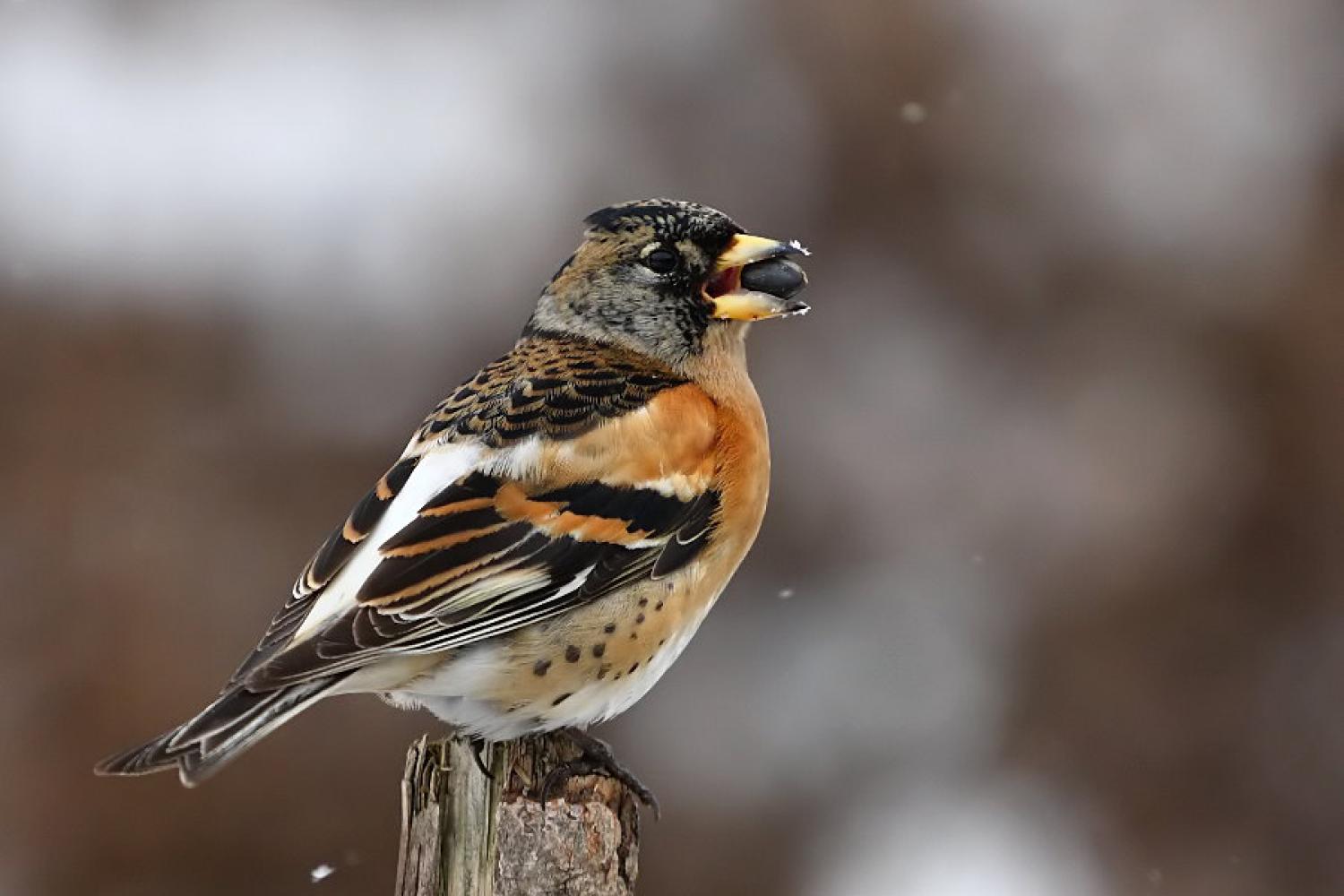Species of Thailand
Brambling
Fringilla montifringilla
Carolus Linnaeus, 1758
In Thai: นกจาบปีกอ่อนอกสีส้ม
The brambling (Fringilla montifringilla) is a small passerine bird in the finch family Fringillidae. It has also been called the cock o' the north and the mountain finch. It is widespread and migratory, often seen in very large flocks.
Taxonomy
In 1758 Linnaeus included the species in the 10th edition of his Systema Naturae under its current binomial name, Fringilla montifringilla. Montifringilla is from Latin mons, montis mountain and fringilla finch. The English name is probably derived from Common West Germanic *brâma, meaning bramble or a thorny bush (compare Standard German Brämling with the same meaning).
Description
The brambling is similar in size and shape to a common chaffinch. Breeding-plumaged male bramblings are very distinctive, with a black head, dark upperparts, orange breast and white belly. Females and younger birds are less distinct, and more similar in appearance to some chaffinches. In all plumages, however, bramblings differs from chaffinches in a number of features:
- the brambling has a white rump, whereas that of the common chaffinch is grey-green;
- the breast is orange, contrasting with a white belly, on the brambling, whereas on the common chaffinch, the underparts are more uniformly coloured (pink or buff);
- the brambling's scapular feathers are orange, whereas the common chaffinch's are grey or grey-brown;
- the flanks are dark-spotted on the brambling, plain on the common chaffinch;
- bramblings lack the white outer tail feathers of common chaffinches.
An additional difference for all plumages except breeding-plumaged males is the bill colour - yellow in the brambling, dull pinkish in the common chaffinch (breeding-plumaged male bramblings have black bills, common chaffinches in the corresponding plumage have grey bills).
Distribution and habitat
This bird is widespread, in the breeding season, throughout the forests of northern Europe and east across the Palearctic. It is migratory, wintering in southern Europe, North Africa, northern India, northern Pakistan, China, and Japan. It regularly strays into Alaska during migration and may continue as far south as the western United States. The global population of bramblings is about 100 to 200 million, with a decreasing trend.
Open coniferous or birch woodland is favoured for breeding.
Behaviour and ecology
This species is almost entirely migratory. In Europe, it forms large flocks in the winter, sometimes with thousands or even millions of birds in a single flock. Such large gatherings occur especially if beech mast is abundant. Bramblings do not require beech mast in the winter, but winter flocks of bramblings will move until they find it. This may be an adaptation to avoid competition with the common chaffinch. Bramblings mostly eat seedsin winter, but insects in summer. It builds its nest in a tree fork, and decorates the exterior with moss or lichen to make it less conspicuous. It lays 4–9 eggs.
This article uses material from Wikipedia released under the Creative Commons Attribution-Share-Alike Licence 3.0. Eventual photos shown in this page may or may not be from Wikipedia, please see the license details for photos in photo by-lines.
Category / Seasonal Status
Wiki listed status (concerning Thai population): Accidental
BCST Category: Recorded in an apparently wild state within the last 50 years
BCST Seasonal status: Non-breeding visitor
Scientific classification
- Kingdom
- Animalia
- Phylum
- Chordata
- Class
- Aves
- Order
- Passeriformes
- Family
- Fringillidae
- Genus
- Fringilla
- Species
- Fringilla montifringilla
Common names
- Thai: นกจาบปีกอ่อนอกสีส้ม
Conservation status

Least Concern (IUCN3.1)
Photos
Please help us review the bird photos if wrong ones are used. We can be reached via our contact us page.
Range Map

- Doi Inthanon National Park
- Doi Pha Hom Pok National Park
